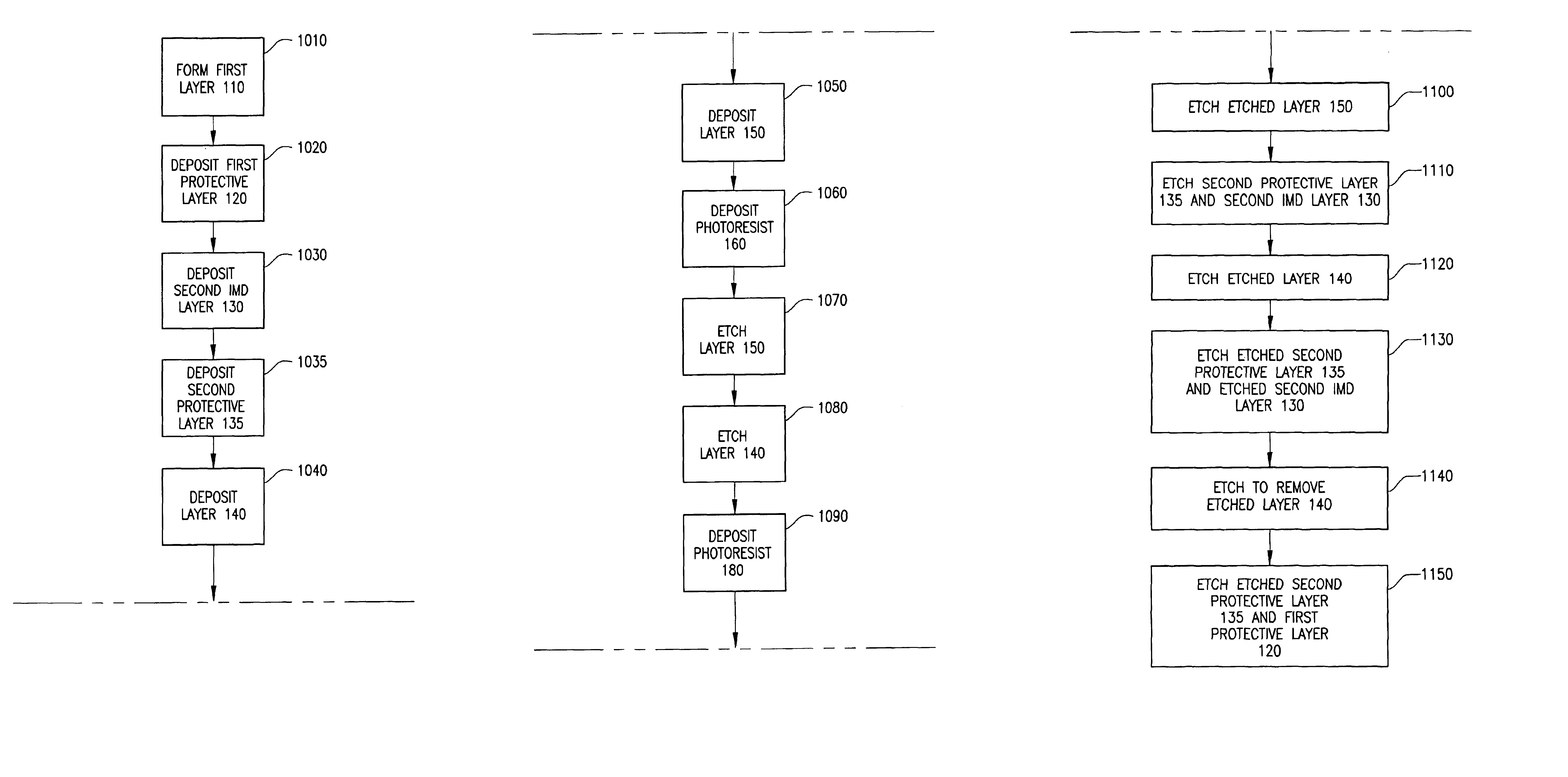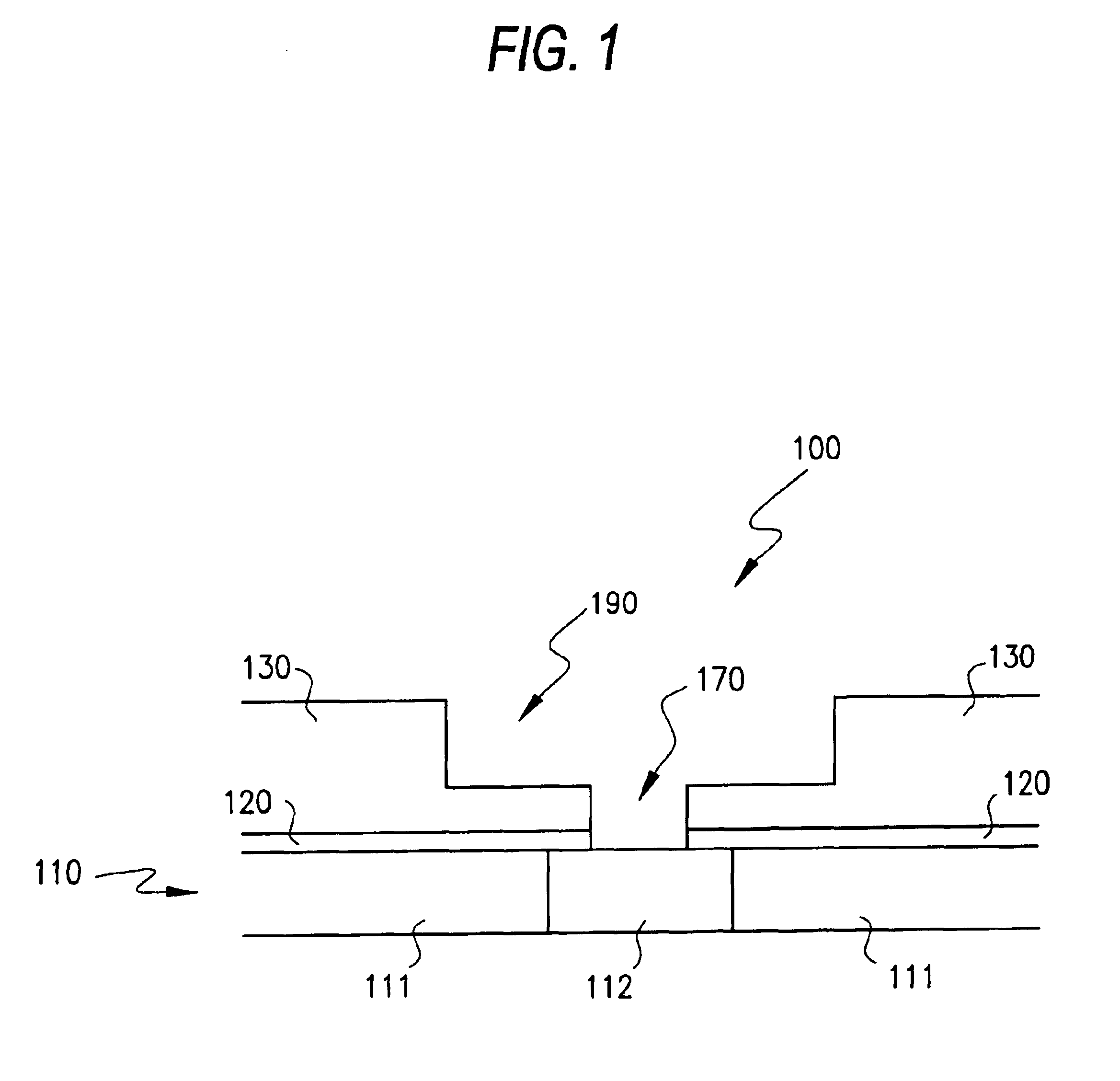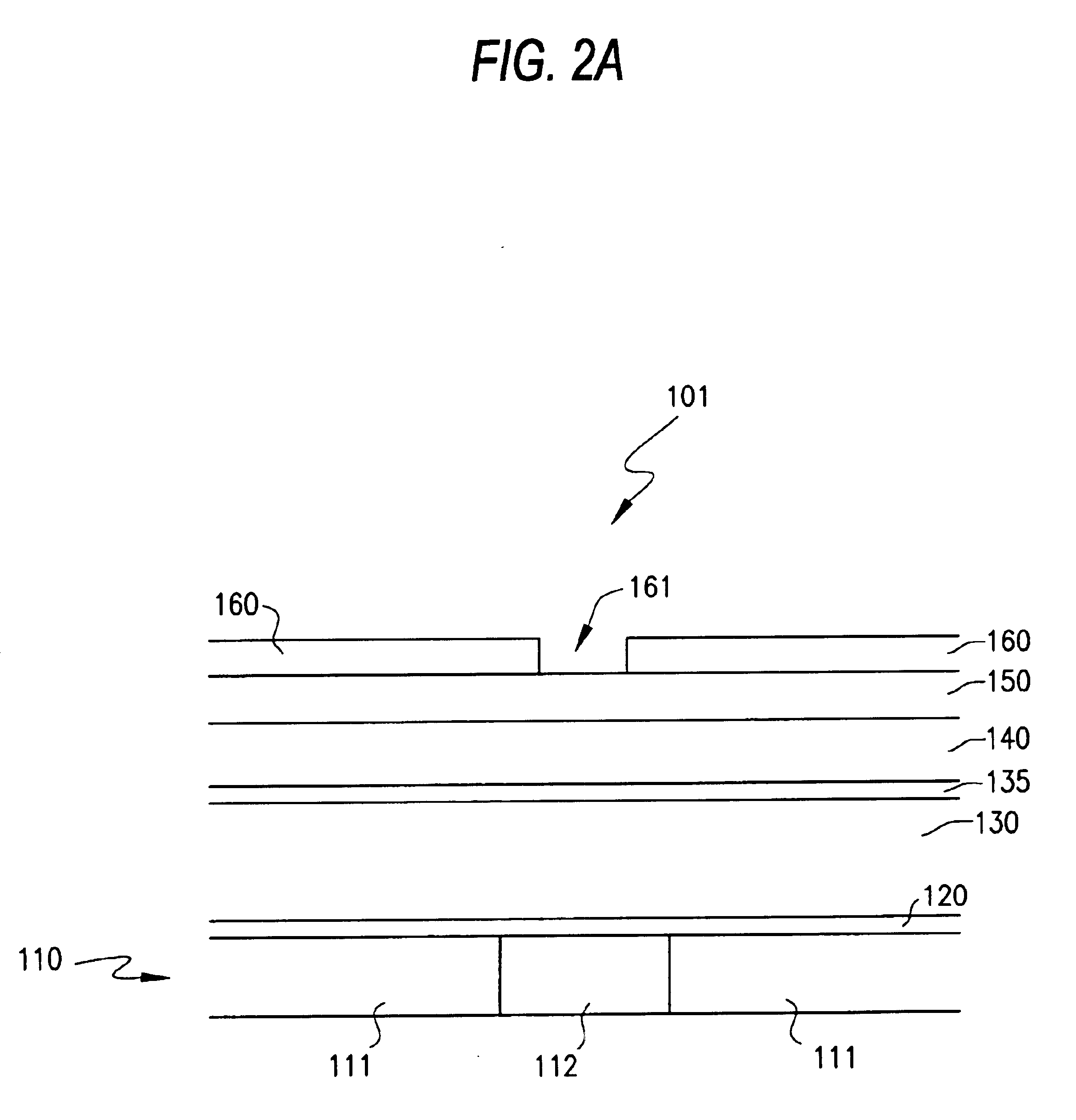Method of fabricating a semiconductor multilevel interconnect structure
a multi-level interconnect and semiconductor technology, applied in the field of semiconductor memory and logic devices, can solve the problems of structural defects in the via, adversely affecting the performance of the multi-level interconnect, and poisoning of the imd, and achieve the effect of reducing the above-described deficiencies
- Summary
- Abstract
- Description
- Claims
- Application Information
AI Technical Summary
Benefits of technology
Problems solved by technology
Method used
Image
Examples
Embodiment Construction
[0028]FIG. 1 is a partial cross-sectional view of an interconnect structure 100 constructed in accordance with the present invention for use with a multilevel interconnect. Structure 100, the fabrication of which is described below, includes a first layer 110 having a first intermetal dielectric layer 111 and a metal portion 112; an etched protective layer 120; an etched second intermetal dielectric layer 130; a via 170; and a trench 190. Structure 100 can accommodate the deposition of an inlaid multilevel interconnect metal. As is evident from FIG. 1, structure 100 is characterized by the absence of any undesirable “ear” (i.e., structural formation of resist residue) on the etched IMD layer 130 at the trench / via edge.
[0029]FIGS. 2A-J illustrate a first embodiment of the method of fabricating the structure 100 depicted in FIG. 1. FIGS. 3A-C are a flow diagram of the fabrication sequence corresponding to FIGS. 2A-J. The method includes first assembling a dual hardmask structure to be...
PUM
| Property | Measurement | Unit |
|---|---|---|
| semiconductor | aaaaa | aaaaa |
| dielectric | aaaaa | aaaaa |
| length | aaaaa | aaaaa |
Abstract
Description
Claims
Application Information
 Login to View More
Login to View More - R&D
- Intellectual Property
- Life Sciences
- Materials
- Tech Scout
- Unparalleled Data Quality
- Higher Quality Content
- 60% Fewer Hallucinations
Browse by: Latest US Patents, China's latest patents, Technical Efficacy Thesaurus, Application Domain, Technology Topic, Popular Technical Reports.
© 2025 PatSnap. All rights reserved.Legal|Privacy policy|Modern Slavery Act Transparency Statement|Sitemap|About US| Contact US: help@patsnap.com



